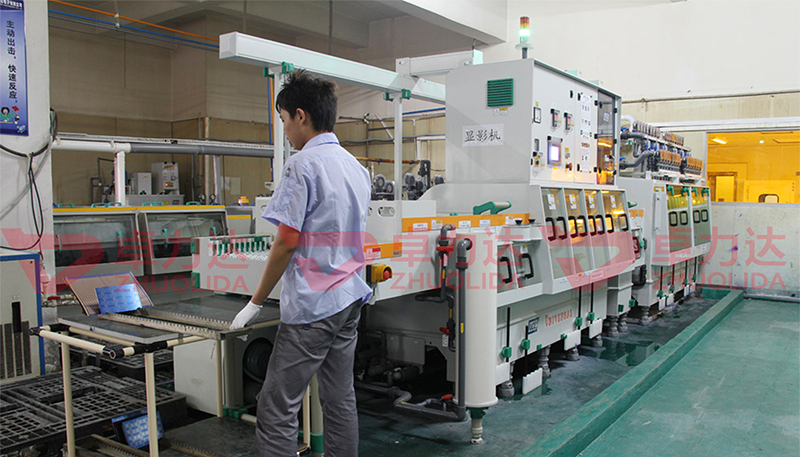
Chemical etching is a subtractive manufacturing process used to create intricate designs or patterns on metal sheets, including stainless steel. This technique is widely applied in industries such as electronics, aerospace, automotive, and decorative arts due to its ability to produce precise, high-quality results without mechanical stress on the material. In chemical etching, an etchant is used to selectively dissolve the metal, forming patterns based on a mask or resist applied beforehand. Here’s a closer look at the process, the materials involved, benefits, challenges, and applications of chemical etching on stainless steel sheets.
The chemical etching process begins with preparing the stainless steel sheet, which is typically cleaned to remove any oils, oxidation, or contaminants that could interfere with the etching process. After cleaning, a photoresist layer (usually a UV-sensitive polymer) is applied to the sheet. This layer is crucial as it protects certain parts of the metal while allowing other areas to be etched.
A photomask, which contains the desired design, is placed over the resist-coated sheet and exposed to UV light. This exposure hardens the areas of the resist that correspond to the intended pattern, making them resistant to the etchant. After exposure, the sheet undergoes a developing process where the unexposed photoresist is washed away, leaving the metal surface exposed in the desired areas. The sheet is then immersed in a chemical solution—commonly ferric chloride or nitric acid—which etches away the exposed parts of the stainless steel.
The rate and depth of etching can be controlled by adjusting factors such as the concentration of the etchant, temperature, and immersion time. Once the desired depth is achieved, the process is stopped by removing the sheet from the etchant and neutralizing any remaining chemicals. Finally, the photoresist layer is stripped away, revealing the finished pattern or design on the stainless steel sheet.
Various grades of stainless steel can be etched using this technique, including commonly used types like 304 and 316. These grades are preferred for their excellent corrosion resistance, strength, and suitability for precision applications. Ferric chloride is one of the most widely used etchants for stainless steel due to its effectiveness and relatively safe handling properties compared to stronger acids. However, nitric acid or hydrochloric acid may also be used for specific types of stainless steel or to achieve certain finish qualities.
Precision and Complexity: Chemical etching allows for extremely detailed and intricate designs, including complex patterns and fine features that are difficult to achieve with other processes. Since there’s no mechanical force applied, it avoids issues like warping, stress, or burrs.
Material Integrity: The process doesn’t affect the metal’s inherent properties since it removes material chemically rather than mechanically. The treated parts retain their strength, flexibility, and other structural properties.
Cost-Effectiveness for Prototyping and Small Batches: Etching is an ideal option for low to medium-volume production runs, as tooling costs are low, and modifications can be made easily. This makes it suitable for prototyping or customized products.
Versatility in Design: With chemical etching, it’s possible to produce multiple depths within a single sheet or apply patterns across large surface areas, offering creative flexibility and broad design potential.
Environmental and Safety Concerns: The chemical solutions used in etching, such as ferric chloride, are hazardous and require careful handling. Etching facilities need proper waste treatment systems to neutralize chemicals before disposal to prevent environmental harm.
Material Thickness Limitations: While chemical etching is effective for thin sheets, it’s less suitable for thicker materials due to longer etching times, increased chemical consumption, and the potential for uneven etching.
Quality Control: Achieving consistency across multiple sheets can be challenging, especially for deep etching. Variables such as temperature, etchant concentration, and exposure time must be tightly controlled to ensure uniform results.
Decorative Panels and Nameplates: Stainless steel’s durability and sleek appearance make it popular for signage, nameplates, and decorative panels in architectural and interior design applications. Etching enables intricate logos, patterns, and textures to be applied with high durability.
Electronics and Micro-Components: In electronics, stainless steel sheets etched with precise patterns are used in circuit boards, connectors, and shielding components. The etching process allows for tiny, detailed features essential in high-density electronic devices.
Medical and Surgical Instruments: Stainless steel is widely used in the medical field due to its corrosion resistance and biocompatibility. Chemical etching is applied to produce custom medical instruments, filters, and surgical blades that require fine tolerances and smooth edges.
Automotive Components: The automotive industry uses etched stainless steel in applications such as engine components, fuel injectors, and decorative trim. The process ensures parts have accurate dimensions and smooth edges without compromising the material’s durability.
Chemical etching of stainless steel sheets offers a unique combination of precision, versatility, and cost-effectiveness, especially for applications requiring complex, burr-free patterns. Despite its challenges, including environmental considerations, it remains a valuable technique in various industries, from decorative arts to high-tech manufacturing. By balancing the benefits and potential drawbacks, manufacturers can leverage chemical etching to produce high-quality components with intricate designs tailored to specific applications.
Contact: andy_Lai
Phone: 18938693450
E-mail: yw9@zldsmt.com
Add: Building A3, Huafa Industrial Park, Fuyong Town, Fuyuan Road, Fuyong Town, Baoan District, Shenzhen,China